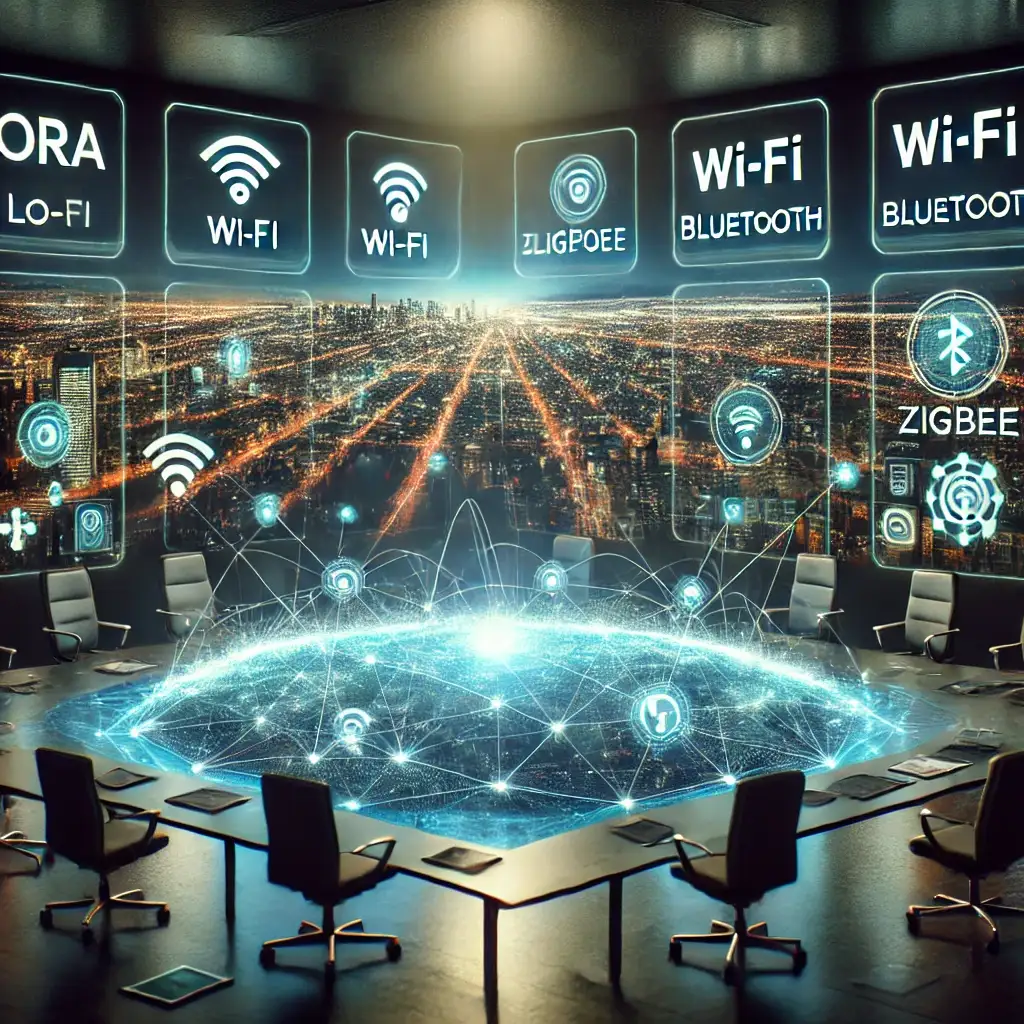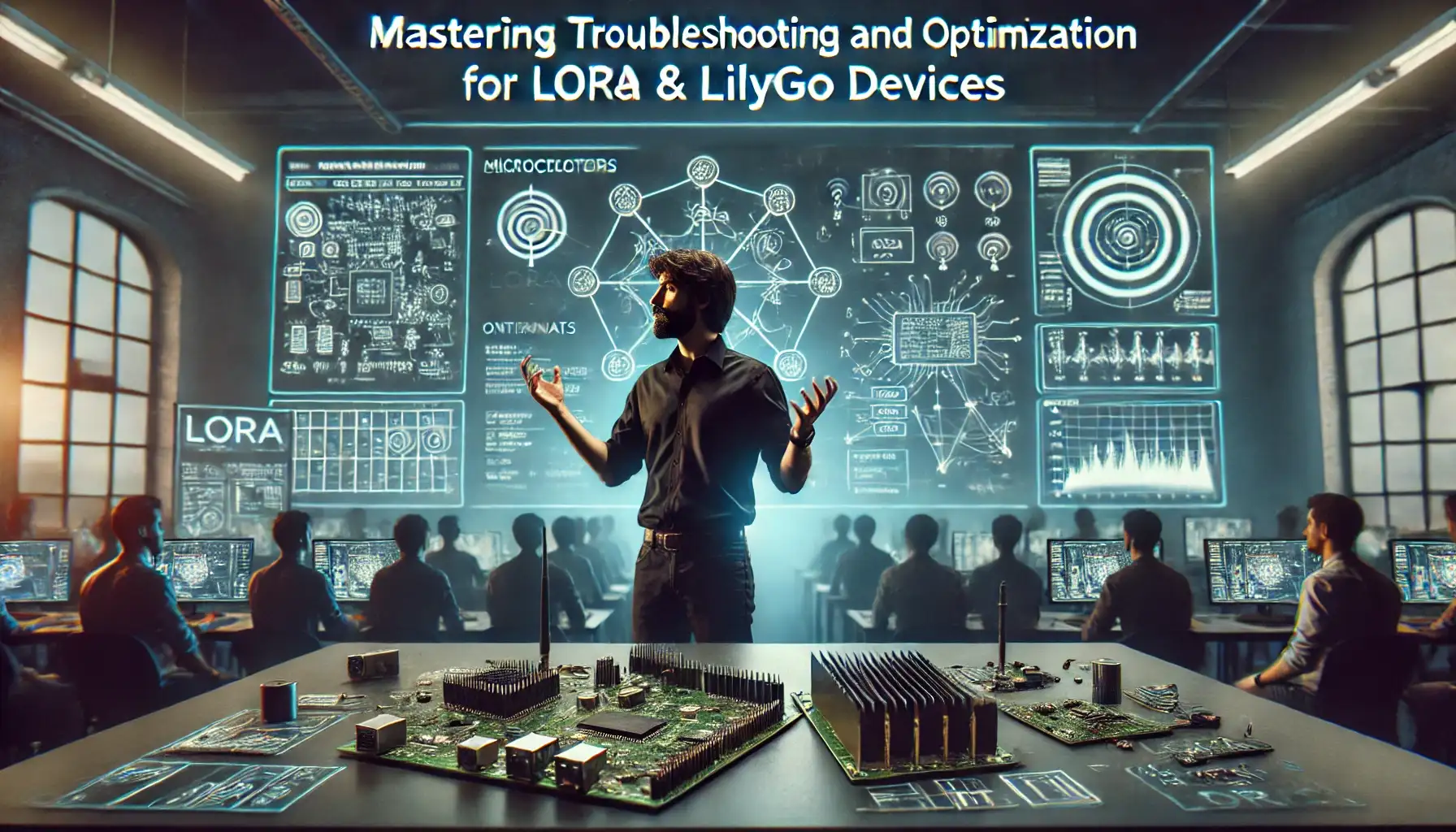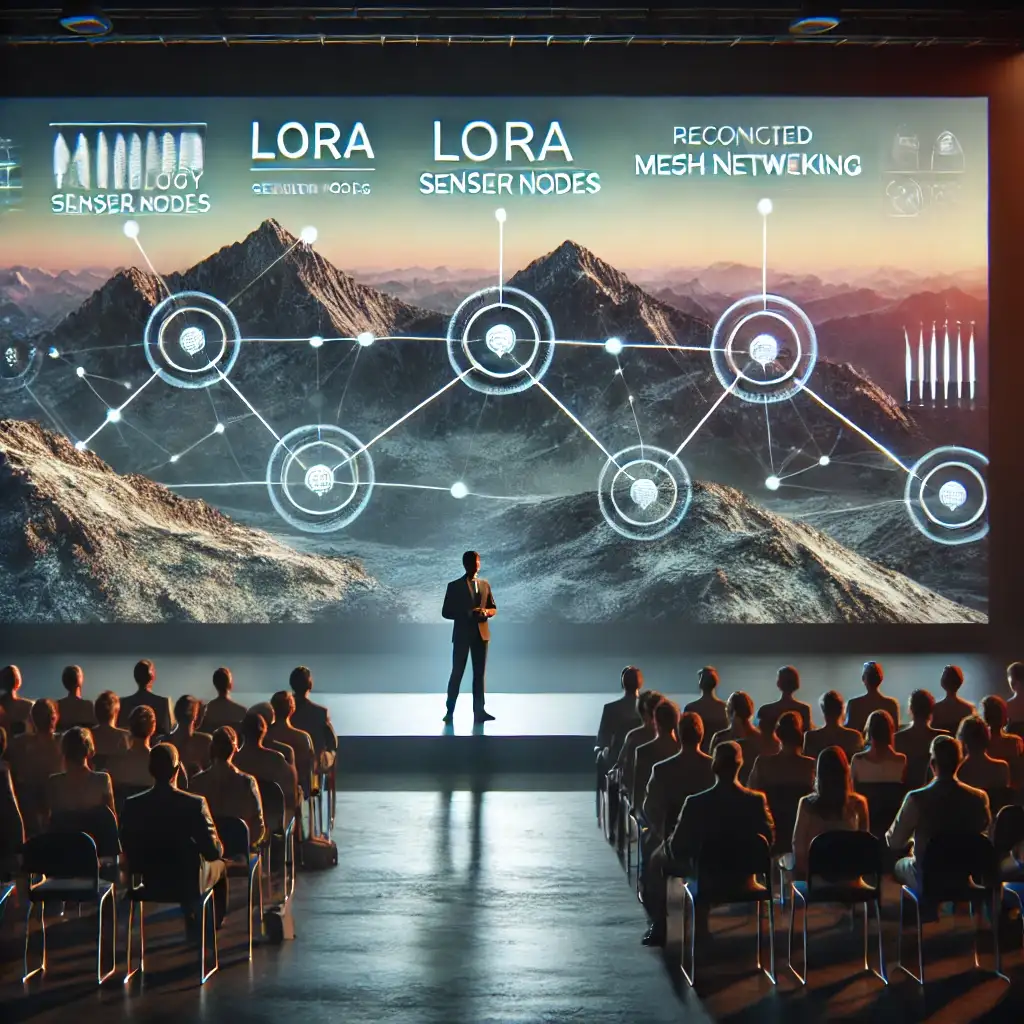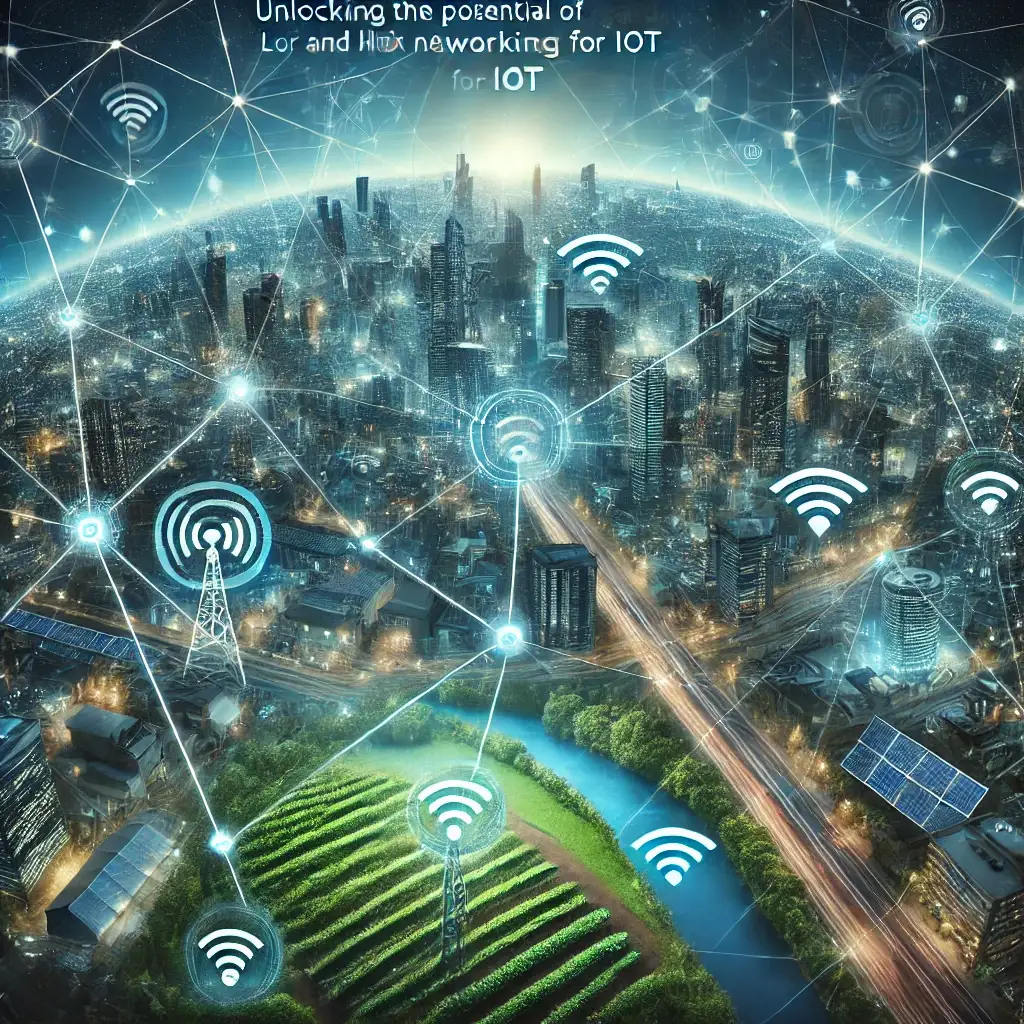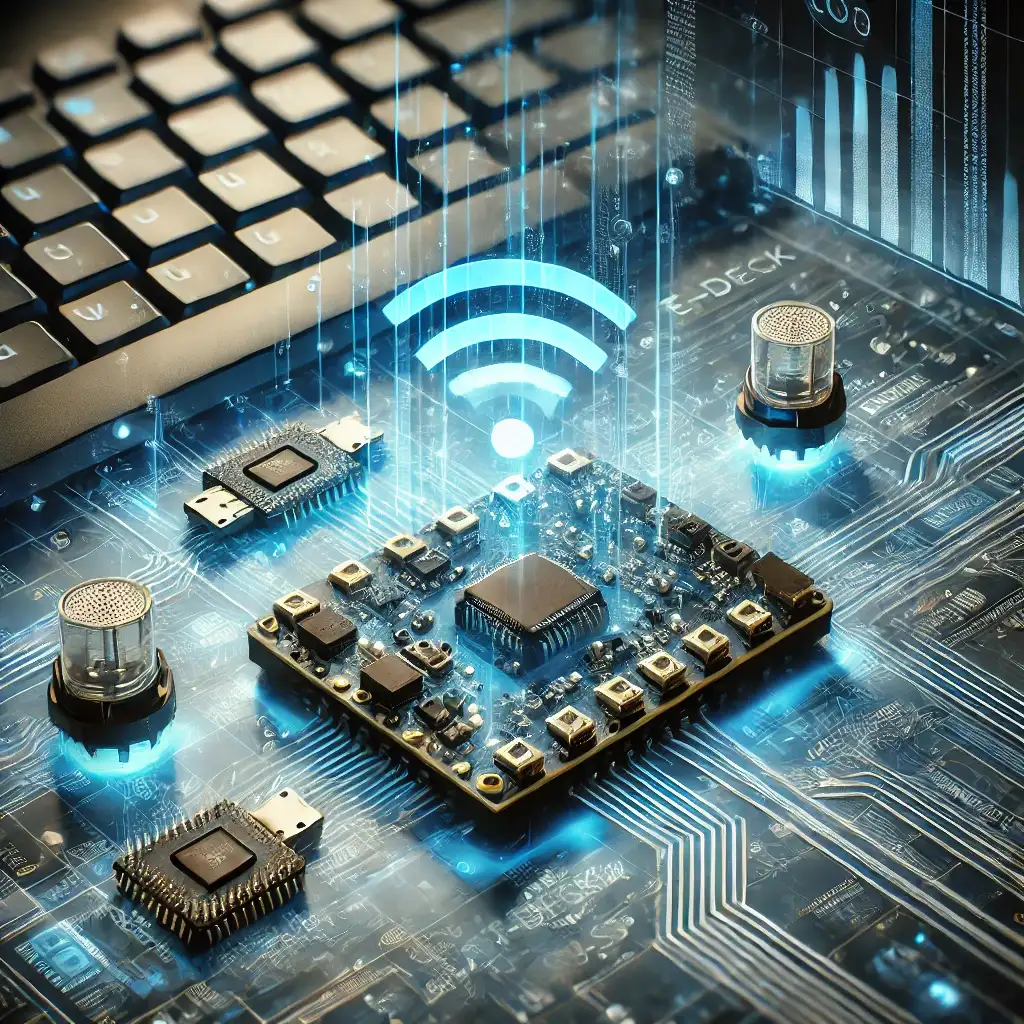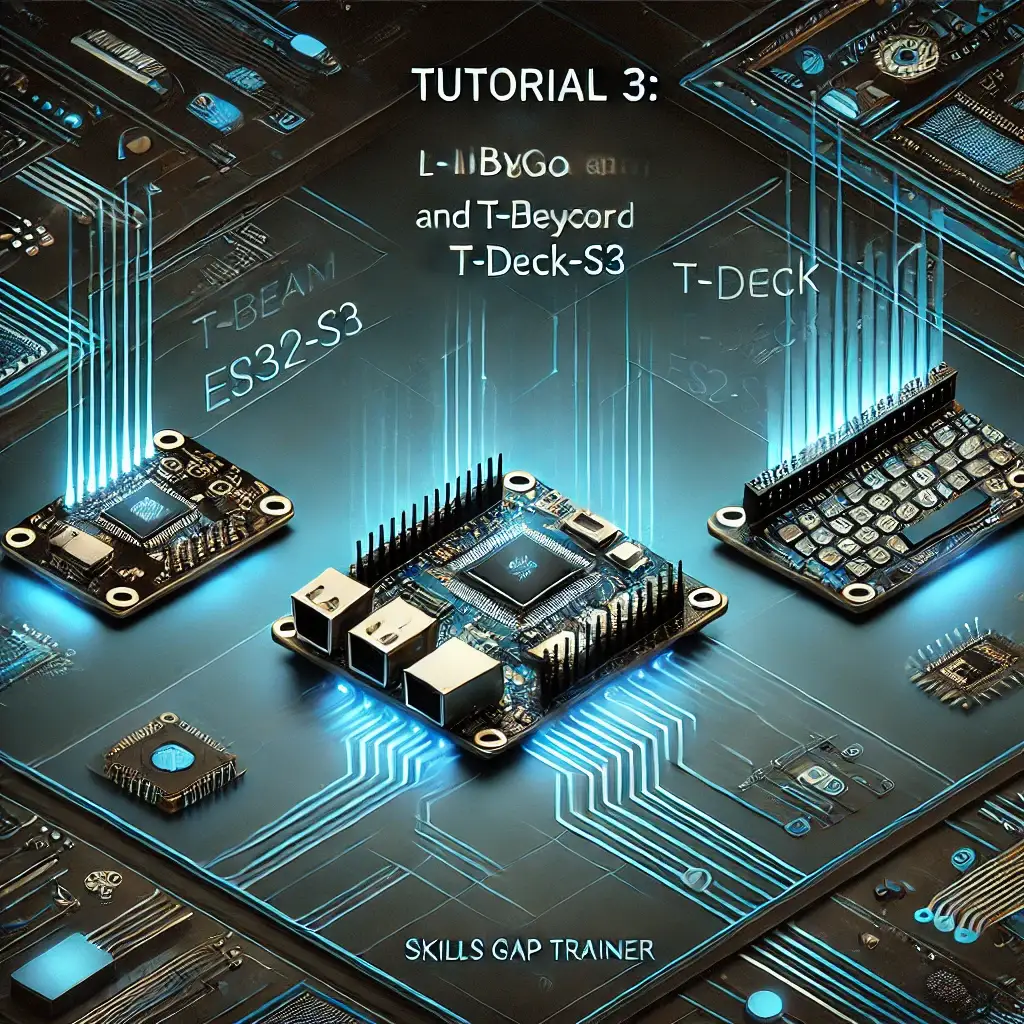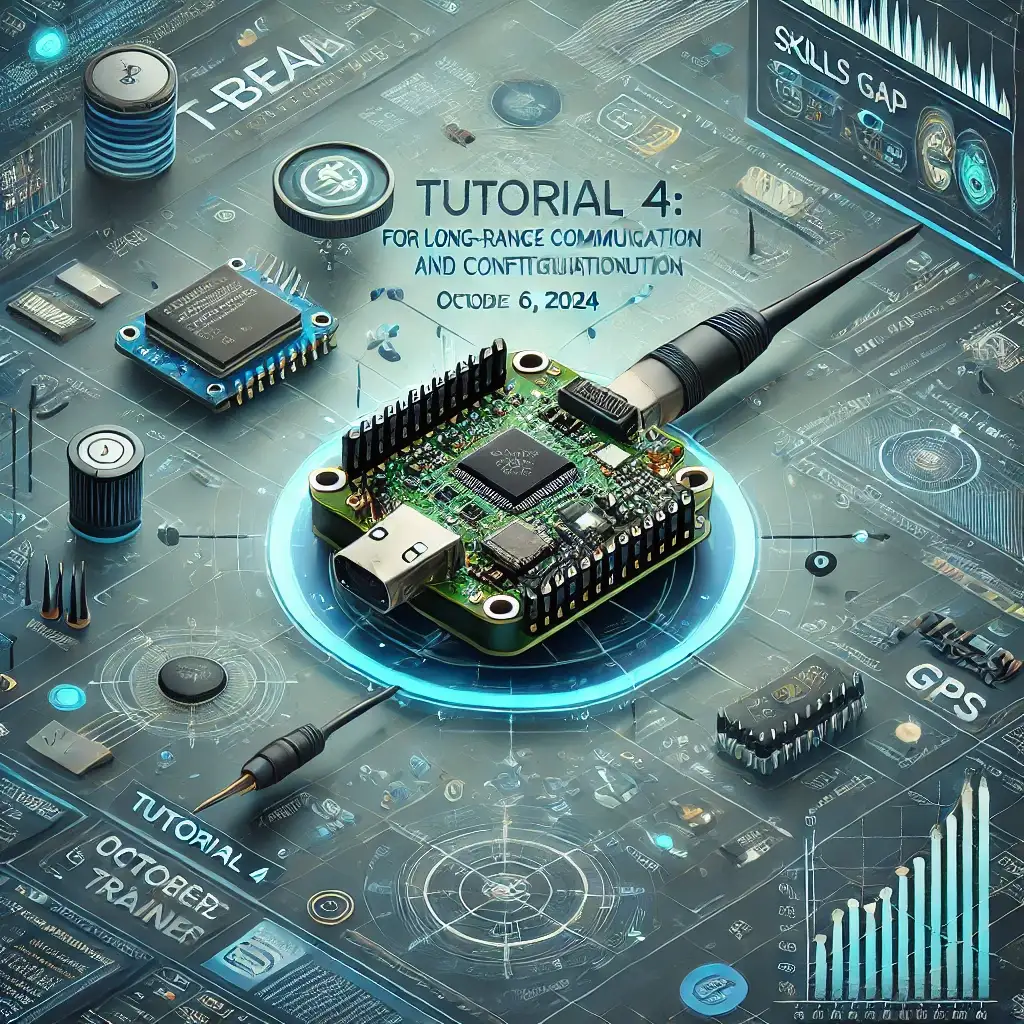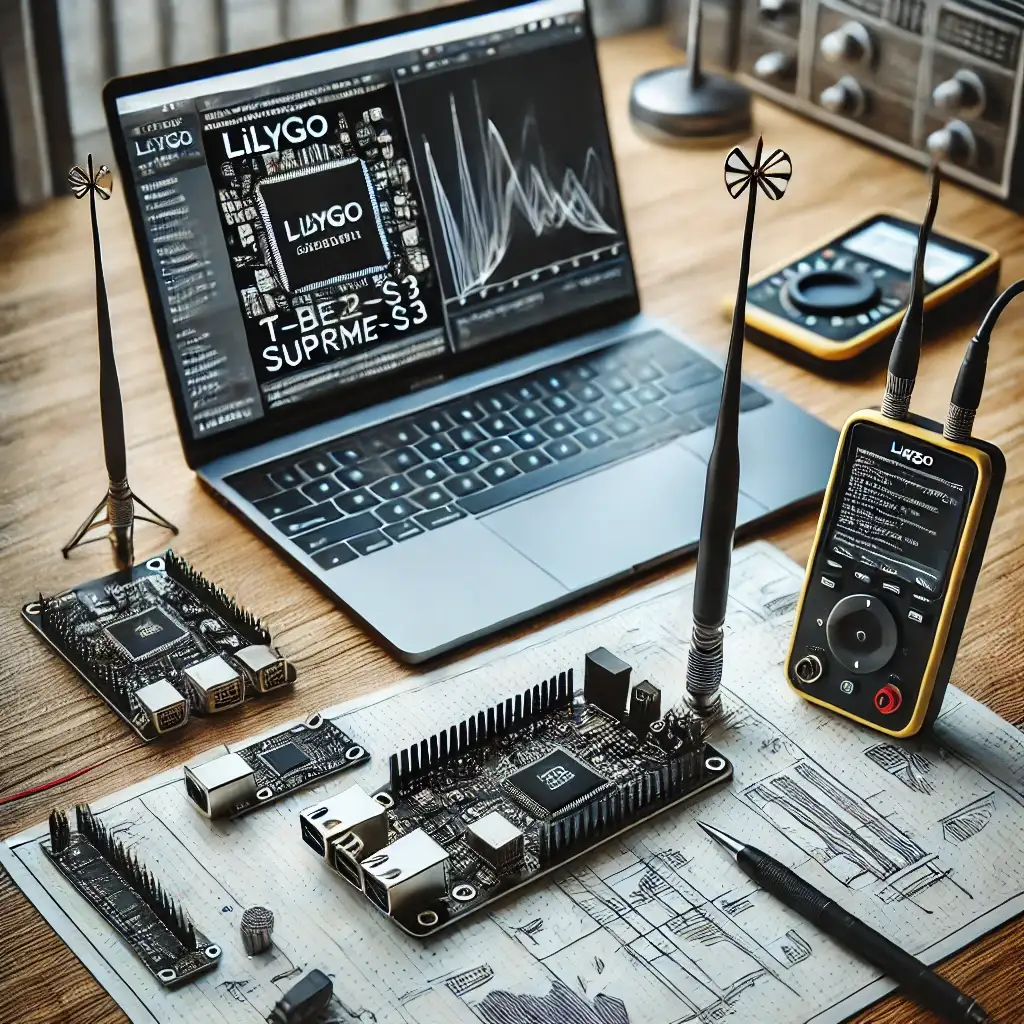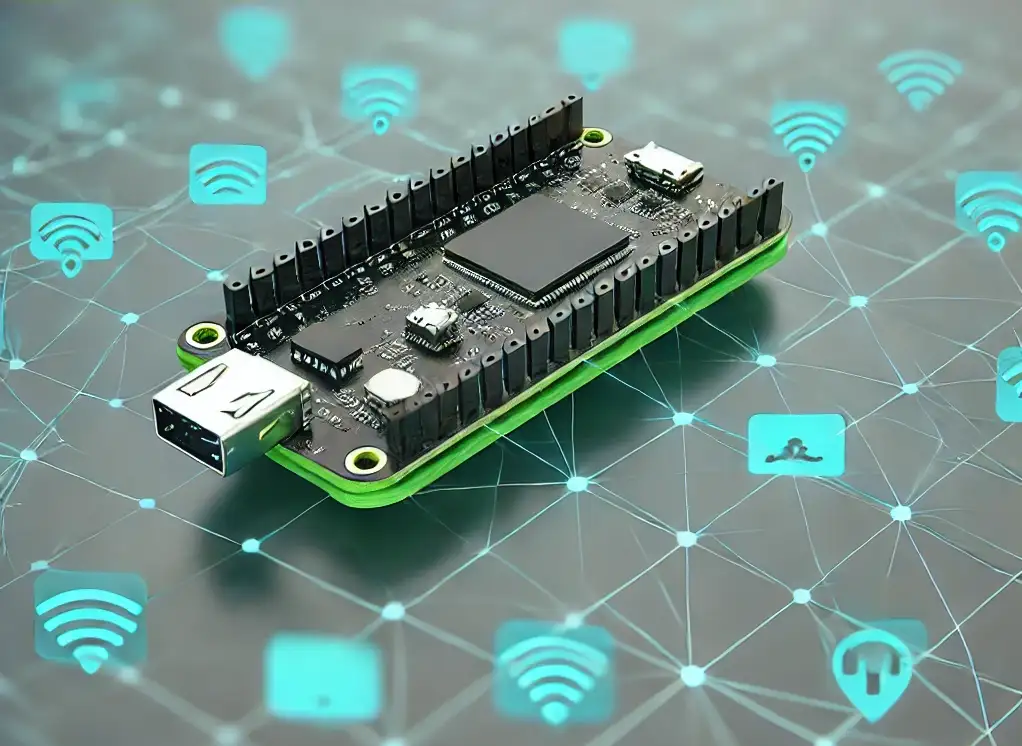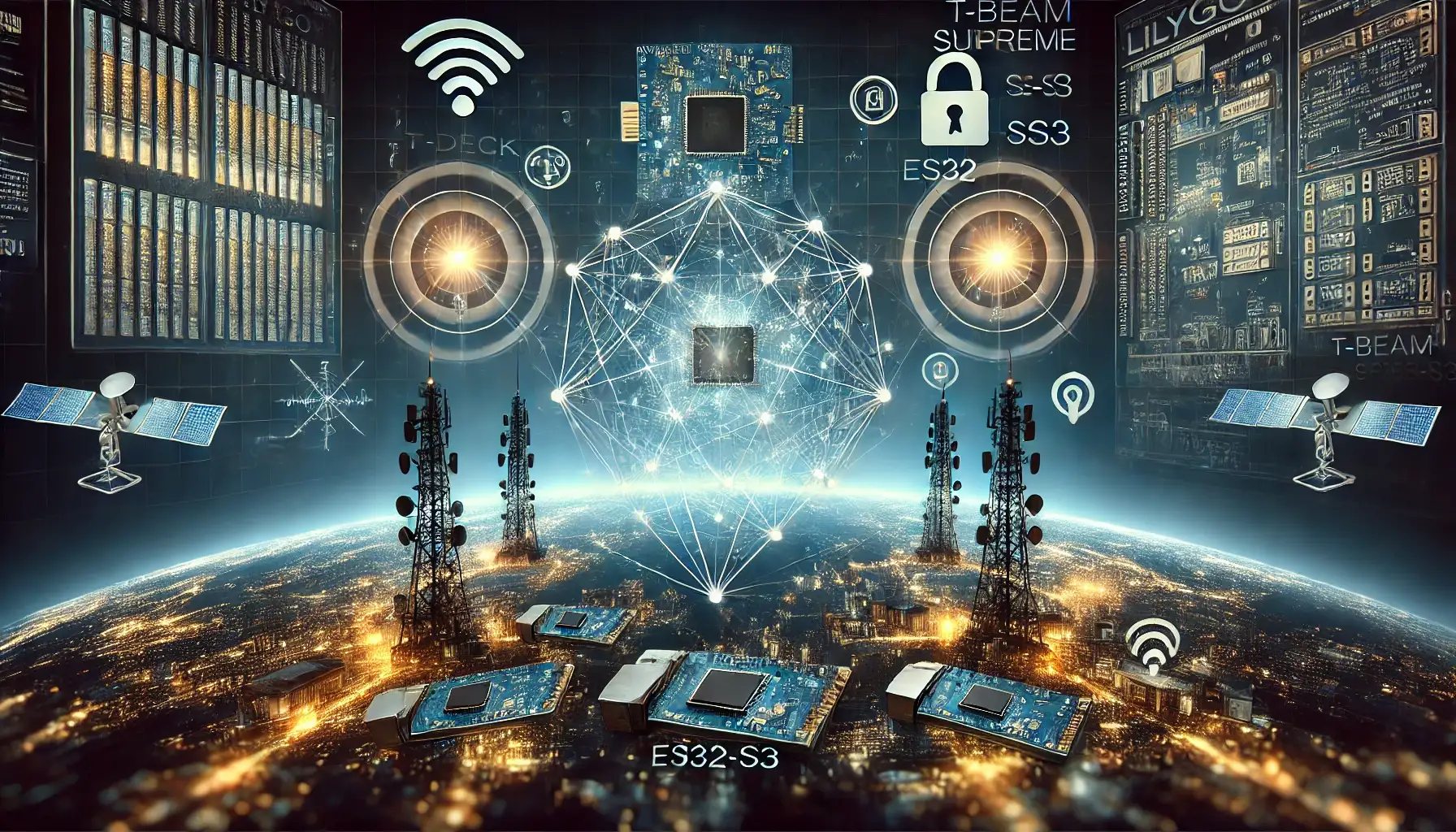Introduction:
This comprehensive course provides a deep dive into the world of long-range, low-power wireless communication, focusing on LoRa technology and its practical implementation using LilyGO micro-controller devices. We’ll explore both the theoretical underpinnings and practical hands-on skills needed to design, deploy, and manage secure and efficient LoRa-based Internet of Things (IoT) solutions. Starting with the fundamentals of LoRa and its evolution within wireless communication, we’ll progress to advanced topics like LoRaWAN network architecture, mesh networking principles, data aggregation techniques, and implementing robust security measures including encryption and key management. You’ll gain extensive hands-on experience using two powerful LilyGO devices: the T-Beam Supreme ESP32-S3 (with integrated GPS) and the T-Deck ESP32-S3 Keyboard (with display and input capabilities). This course is designed for a wide range of learners, from IoT enthusiasts to professional engineers looking to expand their expertise in LoRa-based communication networks.
Lectures:
Module 1: LoRa Fundamentals and Ecosystem
Lecture 1.1: What is LoRa Technology?
This lecture introduces LoRa technology, its history, and its key distinguishing features. We’ll trace the evolution of wireless communication, highlighting the specific needs that LoRa addresses in the IoT landscape. The lecture also covers the core principles of LoRa modulation, including Chirp Spread Spectrum (CSS), and explains its benefits for long-range, low-power transmission.
-
Learning Objectives: Understand the definition, history, and key features of LoRa technology.
-
Summary: LoRa is a long-range, low-power wireless modulation technique ideal for IoT, using CSS to enable robust and efficient communication.
https://skillsgaptrainer.com/what-is-lora-technology/
Lecture 1.2: LoRa vs. Other Communication Technologies
This lecture presents a comparative analysis of LoRa against other prominent wireless technologies: Wi-Fi, Bluetooth, Zigbee, and cellular. We’ll examine key parameters such as range, data rate, power consumption, network topology, cost, frequency bands, security features, and typical use cases to understand when LoRa is the optimal choice and when alternative technologies might be more suitable.
-
Learning Objectives: Compare and contrast LoRa with other wireless technologies for IoT applications.
-
Summary: LoRa is the preferred choice for long-range, low-power IoT applications with low data rate requirements, while other technologies are better suited for scenarios demanding higher bandwidth or shorter range.
https://skillsgaptrainer.com/lora-vs-other-communication-technologies/
Lecture 1.3: Overview of LilyGO Devices
This lecture provides a detailed overview of LilyGO devices, highlighting the T-Beam and T-Deck. We’ll examine the hardware components, including microcontrollers, LoRa modules, GPS, displays, input interfaces, and expansion options. You will gain an understanding of the unique capabilities of each device and how they cater to different IoT applications. The lecture also introduces other noteworthy LilyGO devices, expanding your awareness of the broader ecosystem.
-
Learning Objectives: Familiarize yourself with the LilyGO product lineup and their key features.
-
Summary: LilyGO offers a range of affordable and versatile development boards for LoRa and IoT projects, with the T-Beam and T-Deck offering specialized functionalities.
https://skillsgaptrainer.com/overview-of-lilygo-devices/
Lecture 1.4: Basic Hardware Setup
In this hands-on lecture, you will physically set up your LilyGO T-Beam and T-Deck. We will cover unboxing, connecting antennas, installing batteries, understanding ports and connectors, setting up the Arduino IDE, installing necessary drivers, and uploading a basic test program. Safety precautions for handling electronic components and batteries will be emphasized throughout.
-
Learning Objectives: Prepare your LilyGO devices for programming and experimentation.
-
Summary: Proper hardware setup and driver installation are essential for successful device operation.
https://skillsgaptrainer.com/basic-hardware-setup/
Lecture 1.5: Introduction to LoRaWAN and Mesh Networking
This lecture explains the LoRaWAN protocol and network architecture, including end-devices, gateways, network servers, and application servers. We will examine the different classes of LoRaWAN devices (A, B, and C) and their power consumption characteristics. The lecture also introduces mesh networking basics and the potential benefits of integrating mesh topologies with LoRa.
-
Learning Objectives: Understand the basics of LoRaWAN and mesh networking principles.
-
Summary: LoRaWAN provides a standardized framework for wide-area LoRa networks, while mesh networking enhances resilience and coverage.
https://skillsgaptrainer.com/introduction-to-lorawan-and-mesh-networking/
Module 2: Getting Started with LilyGO Devices (Choose one of the following two lectures based on your chosen device):
Lecture 2.1: Getting Started with LilyGO T-Beam
This lecture provides a step-by-step guide to getting started with the LilyGO T-Beam. We’ll cover powering up the device, connecting it to your computer, configuring the Arduino IDE and ESP-IDF development environments, programming the LoRa module for sending and receiving data, integrating GPS functionality using the TinyGPS++ library, and combining LoRa and GPS to transmit location data. Troubleshooting common issues will also be addressed.
-
Learning Objectives: Configure and program the T-Beam for LoRa communication and GPS tracking.
-
Summary: Gain hands-on experience in setting up and programming the T-Beam for various IoT applications.
https://skillsgaptrainer.com/getting-started-with-lilygo-t-beam/
OR
Lecture 2.2: Getting Started with LilyGO T-Deck
This lecture focuses on setting up and using the LilyGO T-Deck. You will learn how to power up the device, install necessary drivers, configure the Arduino IDE, program the integrated display, establish basic LoRa communication, utilize the input buttons, create simple menu interfaces, adjust LoRa parameters, and troubleshoot common problems.
-
Learning Objectives: Master the basics of programming the T-Deck and using its interactive features.
-
Summary: Learn to program the T-Deck for interactive IoT applications using its display and input capabilities.
https://skillsgaptrainer.com/getting-started-with-lilygo-t-deck/
Module 3: Point-to-Point Communication and Device Configuration
Lecture 2.3: Setting Up Point-to-Point Communication
This lecture guides you through establishing point-to-point LoRa communication between two LilyGO devices. You will learn how to configure one device as a sender and the other as a receiver, test data transmission, implement bidirectional communication, add checksums or cyclic redundancy checks (CRC) for data integrity, experiment with different LoRa parameters (spreading factor, bandwidth, coding rate, and transmit power) to optimize communication, and troubleshoot common connectivity issues.
-
Learning Objectives: Establish and test point-to-point LoRa communication, including bidirectional data exchange and error handling.
-
Summary: Point-to-point communication is a fundamental building block for more complex LoRa networks.
https://skillsgaptrainer.com/setting-up-point-to-point-communication/
Lecture 2.4: Configuring Device Settings
This lecture explores the importance of configuring device settings for optimal LoRa communication. You will learn about regional frequency regulations, setting the correct frequency in your code, adjusting bandwidth and spreading factor to balance data rate and range, configuring coding rates for error correction, and implementing AES encryption for secure communication. Best practices for secure and efficient configurations will be discussed, along with practical application scenarios.
-
Learning Objectives: Configure LoRa devices for optimal performance, security, and compliance with regional regulations.
-
Summary: Understanding and correctly configuring device settings is crucial for building robust and reliable LoRa networks.
https://skillsgaptrainer.com/configuring-device-settings/
Lecture 2.5: Basic Troubleshooting and Optimization
This lecture presents a systematic approach to troubleshooting LoRa communication problems. We will explore common setup issues, such as device not powering on, communication failures, inconsistent data transmission, compilation errors, driver conflicts, and offer practical solutions for resolving them. The lecture will also cover optimization techniques for power management, antenna placement and selection, and data packet optimization. Best practices for maintenance and reliability will also be discussed.
-
Learning Objectives: Develop troubleshooting skills and learn optimization techniques for LoRa networks.
-
Summary: Troubleshooting and optimization are crucial for building reliable and efficient LoRa-based IoT systems.
https://skillsgaptrainer.com/basic-troubleshooting-and-optimization/
Module 4: Advanced LoRa Techniques and Security
Lecture 3.1: Introduction to Advanced LoRa Features
This lecture introduces advanced features of LoRa technology that can be used to fine-tune your networks for optimal performance. Building on the basic principles of LoRa modulation, we will explore spread factor, coding rate, and transmission power in detail, explaining how these parameters affect range, data rate, reliability, and power consumption. Practical demonstrations and code examples will illustrate how to configure these parameters and how to balance them to achieve specific project requirements. We’ll also cover legal and ethical considerations regarding frequency usage and transmission power.
-
Learning Objectives: Understand and apply advanced LoRa parameters for network optimization.
-
Summary: Fine-tuning LoRa parameters allows you to tailor your network’s performance to meet specific application needs.
https://skillsgaptrainer.com/introduction-to-advanced-lora-features/
Lecture 3.2: Implementing Secure Communication
This lecture emphasizes the importance of security in IoT and LoRa networks. You’ll learn about common security threats like eavesdropping, data tampering, replay attacks, and unauthorized access. We will then explore encryption methods, including symmetric and asymmetric encryption, and delve into best practices for key management. The lecture will provide a practical demonstration of implementing AES encryption on LilyGO devices using the Arduino Crypto library, covering key generation, encryption/decryption functions, and testing the encrypted communication. Finally, we’ll discuss ways to enhance security further using Message Authentication Codes (MACs) and secure key management practices.
-
Learning Objectives: Implement robust security measures in your LoRa networks.
-
Summary: Implementing encryption and proper key management are essential for protecting LoRa communications from security threats.
https://skillsgaptrainer.com/implementing-secure-communication/
Module 5: Mesh Networking
Lecture 3.3: Multi-Hop Routing and Data Aggregation
This lecture introduces the concept of multi-hop routing and data aggregation in LoRa mesh networks. You’ll learn about the benefits of mesh networks, such as extended range, robustness, and flexible deployment. The lecture also covers the challenges associated with implementing mesh networks, including low data rates, high latency, duty cycle limitations, power consumption, routing protocol complexity, and synchronization issues. We will introduce various mesh networking protocols like AODV, RPL, and explore LoRa mesh libraries such as RadioHead. Finally, you will learn about common data aggregation methods and their implementation in code.
-
Learning Objectives: Design and implement multi-hop routing and data aggregation strategies in LoRa networks.
-
Summary: Multi-hop routing and data aggregation are essential techniques for extending the range and optimizing the efficiency of LoRa networks, especially in challenging or large-scale deployments.
https://skillsgaptrainer.com/multi-hop-routing-and-data-aggregation/
Lecture 3.4: Implementing a Mesh Network with LilyGO Devices
This lecture provides a hands-on, step-by-step guide to implementing a mesh network using LilyGO T-Beam and T-Deck devices. We’ll cover planning your mesh network topology, assigning unique addresses to each node, initializing nodes for LoRa communication and mesh networking, implementing node functions (sensor, relay, gateway), testing communication between nodes, implementing error handling and retries, and integrating security measures like encryption and authentication. Finally, the lecture discusses enhancing the mesh network with advanced features, troubleshooting common issues in mesh networks, and real-world applications of LoRa mesh networks.
-
Learning Objectives: Gain practical experience in building and deploying a LoRa mesh network with LilyGO devices.
-
Summary: Learn the practical steps involved in creating a functional mesh network using LilyGO devices, enhancing reliability and coverage for your IoT applications.
https://skillsgaptrainer.com/implementing-a-mesh-network-with-lilygo-devices/
Module 6: Advanced Troubleshooting and Network Optimization
Lecture 4.1: Common Connectivity Issues and Solutions
This lecture focuses on troubleshooting common connectivity issues that you may encounter when deploying LoRa networks. You will learn how to diagnose signal interference and connectivity problems, verify configuration settings, measure signal quality (RSSI and SNR), and identify potential interference sources. The lecture covers solutions like adjusting physical placement, antenna enhancements, optimizing transmission parameters, frequency planning, and implementing repeaters or additional nodes. It also introduces shielding and filtering techniques and software enhancements to improve communication reliability. Finally, it presents several case studies demonstrating real-world troubleshooting scenarios and solutions.
-
Learning Objectives: Diagnose and troubleshoot common LoRa connectivity problems.
-
Summary: Gain the skills to effectively troubleshoot connectivity challenges and improve signal strength and range.
https://skillsgaptrainer.com/common-connectivity-issues-and-solutions/
Lecture 4.2: Device Configuration Issues
This lecture dives deep into troubleshooting device configuration issues and software conflicts. You’ll learn how to address problems such as frequency mismatches, spreading factor and bandwidth inconsistencies, coding rate misalignments, sync word discrepancies, issues with LoRaWAN network identifiers and security keys, power setting conflicts, and software library or firmware version mismatches. Strategies for resolving these issues, best practices for consistent configurations across multiple devices, effective troubleshooting techniques, and preventive measures will also be covered. Case studies illustrating real-world configuration problems and solutions will further solidify your understanding.
-
Learning Objectives: Troubleshoot and resolve device configuration errors and software conflicts.
-
Summary: Learn how to prevent and fix configuration-related problems, ensuring optimal performance and security in LoRa networks.
https://skillsgaptrainer.com/device-configuration-issues/
More Learning Resources – Tutorials:
Tutorial 1: Understanding the Basics of LoRa Technology and Mesh Networking
This tutorial provides a foundation in LoRa and mesh networking. You will learn what LoRa is, its key advantages, and the basic principles of mesh networks.
-
LilyGO Tasks: Conceptual introduction to the T-Beam and T-Deck. No device-specific tasks.
-
Learning Objectives: Grasp fundamental LoRa and mesh networking concepts.
-
Unique Aspects: Provides a broad overview, laying the groundwork for more detailed tutorials.
https://skillsgaptrainer.com/understanding-the-basics-of-lora-technology-and-mesh-networking/
Tutorial 2: Understanding LoRa Technology and Communication Principles
Explores the technical details of LoRa: frequency bands, bandwidth, spread factor, coding rate, modulation. Discusses security and encryption methods.
-
LilyGO Tasks: Focuses on the theory of LoRa parameters, not device configurations.
-
Learning Objectives: Understand LoRa’s technical aspects for performance and security.
-
Unique Aspects: A technical deep dive to prepare for practical device configuration.
https://skillsgaptrainer.com/understanding-lora-technology-and-communication-principles/
Tutorial 3: LilyGO T-Beam and T-Deck: An In-Depth Exploration for Tech Enthusiasts
Compares the T-Beam and T-Deck: features, capabilities, use cases, real-world performance (range, battery life). Provides hardware/software details and getting started guides.
-
LilyGO Tasks: Introduces both devices, exploring features and applications.
-
Learning Objectives: Understand each device’s strengths and weaknesses to choose the right one for a project.
-
Unique Aspects: Comparative analysis based on testing, giving practical insights.
https://skillsgaptrainer.com/lilygo-t-beam-and-t-deck-an-in-depth-exploration/
Tutorial 4: LilyGO T-Beam Setup and Configuration Guide
Step-by-step guide to setting up the T-Beam: unboxing, hardware overview, Arduino IDE setup, LoRa and GPS configuration, example applications (environmental monitoring, messaging, mesh networking), troubleshooting.
-
LilyGO Tasks: Setting up the T-Beam for LoRa/GPS.
-
Learning Objectives: Configure the T-Beam for various applications.
-
Unique Aspects: Practical, hands-on experience and exploration of use cases.
https://skillsgaptrainer.com/lilygo-t-beam-setup-and-configuration-guide/
Tutorial 5: Setting Up and Configuring LilyGO T-Beam Supreme ESP32-S3 and T-Deck ESP32-S3 Keyboard
Guides you through setting up both the T-Beam and T-Deck for basic LoRa communication, including hardware overview, software setup, programming examples, connecting to a LoRa network, testing, and practical applications (off-grid communication, point-to-point messaging).
-
LilyGO Tasks: Configuring basic LoRa communication between the T-Beam and T-Deck.
-
Learning Objectives: Set up and test basic LoRa communication between both devices.
-
Unique Aspects: Provides a combined approach, demonstrating communication between two different LilyGO devices.
https://skillsgaptrainer.com/setting-up-and-configuring-lilygo-t-beam-supreme-and-t-deck/
Tutorial 6: Secure Communication for All: How to Set Up a LoRa Mesh Network
Focuses on building a secure LoRa mesh network using both T-Beams and T-Decks. Covers hardware/software requirements, AES encryption implementation, testing, troubleshooting, and real-world applications.
-
LilyGO Tasks: Setting up a mesh network using T-Beams and T-Decks.
-
Learning Objectives: Deploy a secure LoRa mesh network.
-
Unique Aspects: Emphasizes the combination of T-Beams and T-Decks in a mesh environment and secure communication.
https://skillsgaptrainer.com/secure-communication-for-all-how-to-set-up-a-lora-mesh-network/
Tutorial 7: Setting Up a Secure LoRa Mesh Network Using LilyGO T-Deck
Provides a step-by-step guide to creating a secure LoRa mesh network using only T-Deck devices. Explores incorporating encryption and key management techniques into the mesh network. Highlights the use of the T-Deck’s display and keyboard for network interaction and monitoring.
-
LilyGO Tasks: Building a secure mesh network solely with T-Decks, focusing on UI elements.
-
Learning Objectives: Create a T-Deck based secure LoRa mesh, incorporating user interface features.
-
Unique Aspects: Emphasizes the T-Deck’s standalone capability in a mesh context, showcasing user interface design.
https://skillsgaptrainer.com/setting-up-a-secure-lora-mesh-network-using-lilygo-t-deck/
Tutorial 8: Advanced Mesh Networking Techniques with LilyGO T-Deck and T-Beam Devices
This tutorial explores advanced mesh networking techniques, including multi-hop routing, custom encryption methods, network topology planning, and practical applications in disaster recovery, emergency communication, and secure IoT deployments.
-
LilyGO Tasks: Demonstrates setting up a multi-node mesh network with advanced routing and encryption.
-
Learning Objectives: Implement more complex mesh network configurations.
-
Unique Aspects: Extends beyond basic mesh networking and introduces advanced techniques for customization and specialized use cases.
https://skillsgaptrainer.com/advanced-mesh-networking-techniques-with-lilygo-t-deck-and-t-beam/
Tutorial 9: LilyGO T-Deck and T-Beam Integration for IoT Applications
Explores data acquisition, transmission, and cloud integration using both T-Deck and T-Beam. Covers setting up sensors, programming for data collection and transmission, cloud integration with platforms like AWS IoT and Google Cloud, data visualization, and troubleshooting connectivity and data integrity.
-
LilyGO Tasks: Integrating sensors with both devices and transmitting data to the cloud.
-
Learning Objectives: Implement end-to-end IoT applications with cloud connectivity.
-
Unique Aspects: Shows practical integration with popular cloud IoT platforms.
https://skillsgaptrainer.com/lilygo-t-deck-and-t-beam-integration-for-iot-applications/
Tutorial 10: Real-World Applications of LilyGO and LoRa Technologies
Showcases real-world applications of LoRa and LilyGO devices across various industries, including agriculture, smart cities, and industrial automation. Includes a detailed guide to setting up an environmental monitoring system using a T-Beam for data collection, a T-Deck for user interface and gateway functionality, and a cloud platform for visualization and analysis.
-
LilyGO Tasks: Building an environmental monitoring system with cloud integration.
-
Learning Objectives: Apply learned concepts to a complete, real-world project.
-
Unique Aspects: Provides practical experience in developing a full IoT solution.

https://skillsgaptrainer.com/real-world-applications-of-lilygo-and-lora-technologies/
Tutorial 11: Troubleshooting and Optimizing LoRa Technology
Focuses on troubleshooting and optimizing LoRa networks. Addresses connectivity problems, data transmission errors, power optimization, extending battery life, improving signal strength, minimizing interference, and best practices for reliable operation.
-
LilyGO Tasks: Applies general LoRa troubleshooting and optimization principles to both the T-Beam and T-Deck.
-
Learning Objectives: Diagnose and resolve issues in LoRa networks for enhanced performance.
-
Unique Aspects: Provides valuable debugging skills and techniques for optimizing LoRa networks.
https://skillsgaptrainer.com/troubleshooting-and-optimizing-lora-technology/
Course Conclusion:
Throughout this course, you’ve embarked on a comprehensive journey from understanding the fundamentals of LoRa technology to building and deploying your own secure and efficient IoT applications using LilyGO T-Beam and T-Deck devices. You’ve learned about LoRaWAN and mesh networking, explored different LoRa modules, configured various device settings, implemented security measures, and gained experience in troubleshooting and optimizing your networks. You are now equipped with the knowledge and practical skills to apply LoRa technology creatively and effectively in diverse real-world scenarios, contributing to the growing landscape of interconnected devices.
To see our Donate Page, click https://skillsgaptrainer.com/donate

